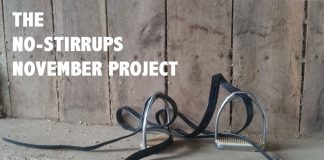If you’re like most horse owners, your phone’s camera roll is probably filled with photos of your horse. But, if you’ve ever tried taking pet photos that include dogs and horses, you know it’s no easy task.

Reviewing Your Pet Photos
Modern cameras, both digital and phone, have many advantages over the old film equipment of the past, the most useful being the ability to instantly view your results—no more waiting several days to see if you captured your friend on her horse at the last show without cropping her head off.
You can now study your composition, timing, and focus in the camera before continuing to snap away. This tool can be the key between creating an ordinary photo or an inspiring image that excites the viewer and perhaps wins a photo contest!
By looking at the image in the camera and asking yourself, “How does it look, and how can I make it better?” you can check for proper focus as well as distractions in the background, and then recompose your image to improve its overall appeal.
Here a few key things to think about when taking pet photos, as well as shooting and reviewing the images in your camera.
Selecting a Subject
Good photos start with good subjects. Dirty spots on a horse, tangled and matted hair on a dog, or bold logos on clothing can be distracting and will take the attention away from your subjects. Take the time to prepare your models, if possible, before taking pet photos.
◆ Horse/Dog: Should be well turned out and clean.
◆ Tack/Equipment: Should be well fitting, clean and in good repair.
◆ Rider/Handler: Safe, simple and neat clothing is best; avoid logos and words on shirts. Shirts should be tucked and buttoned.
Background
Avoid busy backgrounds that take the viewer’s attention away from your subjects when taking pet photos.
Choose a simple and clean background and place your subjects a decent distance in front of your backdrop to draw more attention to them.
◆ Blurred Background: Blurred backgrounds can be achieved by adjusting your camera aperture (the opening where light enters the camera) to around f/2 to f/5.6—the smaller the number the bigger the opening, which allows more light in. This is good if you’re in a darker lighting situation or if you want to blur the background. Or you can use portrait mode on a point-and-shoot or phone camera. This decreases the depth of field and will give more detail to your subject, blurring out what is behind it. The farther away your background is from your subject, the more blurred it will be.
◆ Black Background: A black background can easily be achieved by placing your subject in front of an open barn or indoor arena doorway with the sun shining directly into the door. Place your subject just in front of the shadow where the light will hit them, and make sure any lights in the arena or barn are turned off.
◆ Framing: Take pet photos to the next level by using something to frame your subject, such as a doorway, window, or trees. This can add to your image and attract the viewers’ attention even more towards your subject.
◆ Distractions: Watch for things such as fence lines or trees poking out from the top or side of the subject. We’ve all seen plenty of images of a tree unfortunately growing out of someone’s head.

Composition
◆ Heroes, Friends and Villains: When taking pet photos, think of your subject as the Hero and everything else as ether Friends or Villains. Friends support the hero and villains distract from it.
Villains should be removed either physically, such as relocating a blue bucket or pile of manure, or by zooming in and/or recomposing your image to take it out of the frame. To recompose your image, try moving a few feet in one direction or another to shoot a different angle so you can avoid things you don’t want in the background.
◆ Rule of Thirds: If you break an image into thirds both vertically and horizontally, the human eye is naturally drawn toward the intersection of those lines. The rule states that something of interest should fall on one of those intersections, as opposed to smack-dab in the center of the photo.
Overall Appeal
◆ Mood and Interaction: Mood and/or interaction can bring an emotional feeling to an image and tell a story. By setting up your shot, reviewing it on the camera, and adjusting anything that needs to be adjusted, you will be ready for that special moment.
◆ Action: Stopping motion is more technical and difficult. Point-and-shoot cameras have a sports mode, which tells the camera that you want to stop a moving target, allowing the camera to automatically set a higher shutter speed.
On more sophisticated cameras, you have shutter priority. This means you select the shutter speed, and the camera will alter the aperture depending on your lighting conditions. Shutter speed is calculated in fractions of a second, and the minimum shutter speed needed to stop a horse or dog in motion is a 500th of a second or higher.
Many higher-end cameras also have continuous focus or continuous tracking, which allows you to track the subject in motion, keeping it in focus at all times. The faster the speed you use, the more light is required, so it’s best to shoot action on a bright sunny day.
Happy shooting!
This article about taking pet photos appeared in the May 2021 issue of Horse Illustrated magazine. Click here to subscribe!






